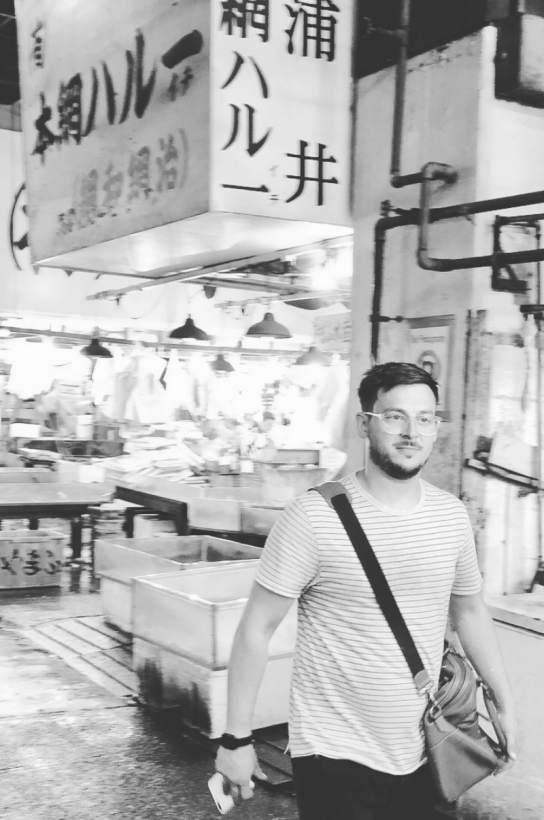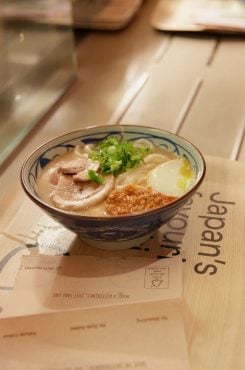CODE meets Stuart Turner, founder of SushiSushi
Published 17 December 2020

One of the UK’s only premium suppliers of quality Japanese ingredients, this week we chat to the founder of SushiSushi Stuart Turner. He tells us about the highlight of the last 14 years, building relationships with chefs and what’s to come in 2021 and beyond.
Let’s start by hearing a bit more about SushiSushi for those that haven’t heard of it before.
We’re one of the UK’s only specialist suppliers of premium quality Japanese ingredients, as well as cookware and kitchen equipment, and have built a reputation supplying the best products Japan has to offer which we source directly from independent producers, farmers and manufacturers.
How did the idea come about?
In 2007 I was living in Australia and working in a sushi bar where I got a taste for Japanese flavours and ingredients. Before then I hadn’t really experienced Japanese cuisine as it wasn’t something readily available outside London.
When I returned to Sheffield, using my background in web design and coding, I built sushisushi.co.uk which started out as a blog to share my interests in Japanese food and culture. Quickly I found a lot of people with shared interest in Japanese food but places to buy ingredients and cookware were limited in the UK.
I sourced a few products through wholesale and built the first iteration of our sushi making kits which I could sell online using PayPal. When a wholesaler told me they were no longer stocking some of the products, I contacted their supplier and he agreed to ship all of his stock to me to distribute in the UK. This then grew into a small eBay shop and as demand increased, we built a complete ecommerce website and built our product range to what you find today.
And how did learn more about Japanese food and products?
From my first taste of sushi living in Australia, I continued to learn more about Japanese cuisine and the produce that comes from each region of the country. I also started attending trade shows to meet Japanese suppliers and producers looking to export to the UK.
Now, each time I go to Japan I spend two weeks soaking up as much knowledge and information as I can. In the first week I visit trade shows, attend tasting sessions and visit some of the farms and factories local to Tokyo.
In the second week I like to focus on a regional area to really get under the skin of their cuisine, meeting smaller artisanal producers that may not be able to travel to some of the bigger trade shows in Tokyo. This is the part of my job that I love – learning more about the intricacies of each region’s produce and their fascinating cultures.
Tell us a bit more about how you source your products?
It’s very much a labour of love. We travel regularly to Japan (though this year’s trips have been postponed) and work closely with the Japanese government to meet artisan producers and farmers to learn about their produce and understand how they use ingredients.
By understanding their craft and building a personal relationship, we can help bring their produce to new customers in the UK, from high-end kitchens to the general public at home, allowing them to reach new audiences and support their continued production. Some of these crafts span back thousands of years and there’s immense pride in helping in some small part to keep them going.
And as you continue to grow, how do you ensure that quality is kept high?
No matter how big SushiSushi grows, we simply won’t compromise on the quality of the products that we supply to customers. We always look to source and stock ingredients to suit different requirements of chefs and businesses. Whether that’s a group of gastro pubs that’s looking for a quality soy sauce they can purchase in a larger quantity, or a Michelin-star chef that’s developed a dish using a particular type of A-grade nori for one dish on their menu.
Of all the products you stock, what do you use the most?
The Tomoe Hokkaido scallop dashi is an absolute game changer. Another is Horaiya Honten Koji soy sauce, made by adding fermented rice malt (Koji) to artisan soy sauce and left to mature for 12 months delivering a sweeter, thicker finish to regular soy. I can get a bit geeky when it comes to soy sauce! Lycopins Tomato Ponzu is an ingredient that will bring any dish to life – it’s fantastic in stocks and sauces to add amazing umami flavours or simply as a dressing for sashimi. Akasu Temaki 7-year-aged red vinegar is a uniquely produced red vinegar made using sake lees. Its natural sweetness makes it a perfect addition to sushi or as a simple marinade.
You’re currently running an Instagram series about some of the chefs and restaurants you work with. Tell us more about that?
I think people are ready to look past the typical image of what they envisage Japanese food to entail. The concept for the series was to highlight some of these ingredients and show how each chef uses them in their cooking to demonstrate how versatile the ingredients can be to add depth of flavour, texture and new combinations that work so well together.
Mostly, we want to educate audiences about the quality products that are available from Japan and the exceptional flavours they deliver. That’s why we ensure a hallmark of quality in what we stock on site. We hope that showcasing some of these products in the stunning dishes these chefs have created will encourage others to learn more about the wealth that Japan has to offer to both professional chefs and those cooking at home.
How do you form these partnerships? Do you approach the chefs with ideas?
We are fortunate to have a really diverse customer base and look to keep a broad range of ingredients and produce in stock to suit all tastes. Chefs are curious by nature and are always looking for new ways to develop their own skills and push the boundaries of their cooking.
Where we’ve built long-term relationships with chefs, it may be that they started buying one or two products from SushiSushi but as we’ve sourced new ingredients, we’ll introduce them to each one and tell them the story of that producer. A lot of these producers have been creating their products for centuries and the methods they use simply can’t be replicated. Chefs love to use ingredients like these in their dishes, and to tell the stories to their guests – it’s all part of the magic and the experience.
You’re now in your fourteenth year and have served in excess of 150,000 customers. What’s been the highlight so far if you had to pick one?
It’s hard to choose just one, but I guess it’s the process of getting to know a passionate client and working with them to explore our range and how they can use our ingredients to enhance the flavours of their dishes. Gareth Ward at Ynyshir is a perfect example of this relationship. How he’s taken the produce we supply and used these elements of flavour and Japanese cooking techniques to build his menu is truly exceptional.
And the hardest part?
2020 has been the most difficult year for hospitality, certainly in my career. But where we’ve been met with challenges and impacted by restrictions and lockdowns – the spirit of our industry has come to life. I’m blown away by how much chefs have pivoted their businesses to keep doing what they love. I also think from spending more time at home, people have fallen in love with food again and found the joy in simply preparing a meal from scratch, which I hope we don’t lose sight of.
If you had to eat one meal for the rest of your life, what would it be?
It would be the Yakitori tasting menu from Masahiko Kodama’s restaurant Yakitori Kodama in Setagaya, a western suburb of Tokyo. He takes a really humble cuisine and has elevated it to another level. David Chang said in his Netflix documentary – Ugly Delicious – that it was the best BBQ food he’s ever had.
And what’s to come in 2021 and beyond?
We hope to return to Japan as soon as we can to catch-up with some of the producers we work with and see how their own operations have developed and evolved. We’re looking to create another series of videos where we meet the producers themselves, so we can highlight their craft and bring their stories to audiences at home. So stay tuned for more to come!
Watch the video series online here




